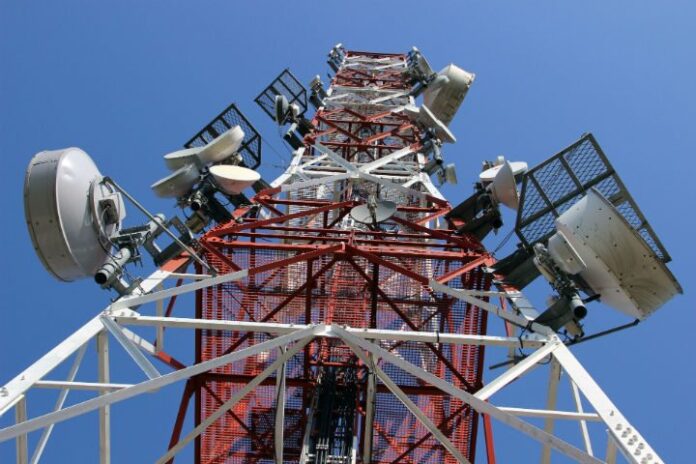It’s become rather apparent that microwave backhaul networks are becoming exhausted. This is largely due to not only a dramatic increase in mobile subscribers, but also a rapid increase in the capacity per subscriber brought on by the expansion of “4G.” While some operators have the ability to increase capacity licenses on their wireless backhaul systems, those are typically being exceeded, as well. That said, hope is not all lost, because there a number of new technologies that have already been introduced, and more coming to the market in the near-term that can enable significant microwave capacity scale.
Globally, most countries have been opening up new spectrum, primarily in the 60 GHz (V-Band), and 70-80 GHz (E-Band) ranges. This spectrum is very beneficial, as very wide channels (250 megahertz to 1 gigahertz) are available, enabling link capacities of 1 to 5 gigabits per second. While it’s true that this is very beneficial to scaling wireless backhaul network, the downside is that the range is typically limited to 3 to 5 kilometers, thus preventing the spectrum from being broadly applicable. The reality is that this spectrum will typically be limited to between 20% and 40% of the backhaul links.
The upside is that a number of new technologies are emerging that enable scalability on the majority of the links that can’t be covered by E-Band. The first technology advancement being introduced in microwave backhaul systems is higher order modulations. There are many microwave systems available now that are capable of 2048 QAM, and in all likelihood 4096 QAM is not so far off in the future. When you consider that these newer, more advanced systems can offer a 50% throughput increase vs. the traditional 256 QAM systems that have been deployed in the network, it becomes clear that modulation is key for greater network scalability.
The next technology improvement to consider is wider channel support. New systems can now support up to 112-megahertz channels. This wider spectrum can offer up to a four-times improvement compared to the 28-megahertz and 56-megahertz systems that have been deployed in the past. A third technology leap being made is the emergence of globally applicable multi-channel microwave systems. Some new microwave systems are now able to support two channels simultaneously, in effect doubling the capacity compared to a legacy system.
In addition to the three radio frequency advances that are being made, data and overhead compression are also being introduced on microwave systems. Overhead optimization can typically provide a 10% to 20% capacity increase by analyzing packet headers and removing repeated information. What’s more, this optimization can be performed without any impact to system delay. Bulk compression is another important technological improvement and can provide even greater throughput gains than overhead compression. This is accomplished by looking for repeat patterns across the entire payload. It’s important to note that throughput improvements related to bulk compression are quite dependent on the traffic type, and whether or not the traffic has already been compressed.
However, on most LTE mixes, the throughput improvement can range from 30% to 100%. By performing the compression in real time, there is only a negligible associated additional delay. Bulk compression and overhead compression can also by used together to provide increased cumulative throughput improvements. When both technologies are employed in systems, network operators can consistently achieve over 50% throughput improvements.
All of the new technologies outlined here are each very significant on their own. The task at hand is to find the best technology, or combination of technologies, that will result in a major leap in total system capacity. Higher modulation alone will provide 100% throughput improvement, but when combined with wider channels throughput can be increased 100%, with multi-channel support providing a further doubling in capacity. Clearly, there is hope for overstressed backhaul networks. The combination of these three technologies equates to about a six-times RF throughput increase compared to a 56-megahertz deployment, and a 12-times improvement compared to a 28-megahertz deployment. In addition to these RF improvements, compression can provide a further 50% capacity increase in total system throughput.
Traditional microwave system deployed on 28-megahertz channels were typical limited to 200 megabits per second throughput. With the combination of emerging technologies, capacities of more than 1 Gbps over the air are available in dual 56-megahertz channel deployment, and more than 2 Gbps in 112-megahertz channels deployments. These throughputs can be increased by a further 50% through bulk and overhead compression to over 3 Gbps. This huge increase in microwave throughputs provides backhaul capacity scale to be able meet the burgeoning capacity demands on backhaul networks and address emerging LTE requirements, while also enabling much greater future network scalability.
Editor’s Note: In an attempt to broaden our interaction with our readers we have created this Reader Forum for those with something meaningful to say to the wireless industry. We want to keep this as open as possible, but we maintain some editorial control to keep it free of commercials or attacks. Please send along submissions for this section to our editors at: dmeyer@rcrwireless.com.

